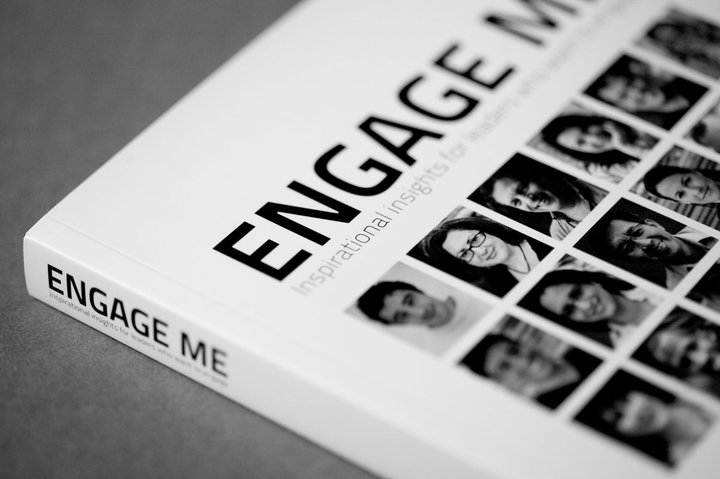Print Isn’t Dead! Why Reading Print is Good for Your Brain
In Ray Bradbury’s story Fahrenheit 451, books are outlawed, and any that are found are promptly burned. When asked where he got his inspiration for the story, Bradbury stated the book was a commentary on how media (he was referring to television, but the Internet now has even compounded this effect) has reduced interest in reading fiction and literature.1
While we haven’t descended into an era where knowledge is deemed unfit for the general populace, we are in a digital age where reading printed books is on the decline...or is it?
Scientists are now showing that reading, particularly reading fiction, is a good workout for your brain, and if you missed that article, click the link to read more. Even though we understand reading is good for us, is there a difference between reading printed books versus digital books? We feel the same curiosity, after all, but what happens in the brain when we actually see the words?
The Great Debate: Printed Books Vs E-readers
In the past ten or fifteen years, technology has transformed how we read. The digital world is changing how we read nearly everything, from news to literature. eReaders such as the Kindle and Nook dominate the reading market, and it’s hard to resist having hundreds (or thousands) of books on one device.
However, print isn’t dead! According to Nielsen in 2015, books sales in the UK went up 4% in bookshops while ebook sales decreased by 4%. Some of the blame may be on climbing ebook prices, driving consumers to seek printed books instead. Children’s books tend to be printed, also, hopefully seeding a future love of reading.2
But, why would digital books not be as good for us? To answer this question, we have to look at research done by neuroscientists and other specialists. You may want to consider some of this research the next time you choose between a printed book and a digital one, including:
Digital Books Affect Your Sleep In A Bad Way
A recent article found that sleep duration and quality have declined over the past 50 years, adversely impacting general health. Perhaps all this innovation may not always be a good thing, because 90% of Americans surveyed used an electronic device before bed at least several times a week.
Researchers found evening exposure to a light-emitting device (including a phone or Kindle or tablet) delays the circadian clock, suppresses melatonin production, and potentially impacts health and safety. Participants who read digital books took longer to fall asleep and they spend less time in REM sleep, so they felt less rested compared to participants who read printed books.3
Print Increases Reading Comprehension
As textbooks jump on the digital bandwagon, students of all ages are now receiving information from a variety of mediums. However, this new usage brings about a wealth of new data, and scientists can look for differences between reading printed and digital words.
In one study, readers were given a short story. Half read it from a book, and the other half used a Kindle. Then, everyone took a test over the story. The result? Kindle readers scored significantly worse when asked questions about plot reconstruction.4
Anne Mangen, lead researcher for the study, hypothesized that “the haptic and tactile feedback of a Kindle does not provide the same support for mental reconstruction of a story as a print pocket book does”.5 Basically, when we read a real book, we use touch to fixate on the paper, and this somehow works as some kind of sensory offload, supporting the visual words we are seeing and then processing in our brains.
On That Same Note, Students Learn More From Printed Textbooks
In another study by Mangen and her team, students were given texts to read in print and on a computer screen in PDF format. Students who read the information on paper scored much higher in comprehension tests compared to students who read the digital PDF.6
As educational reading continues to convert to digital formats, perhaps we should slow down and heed the research findings of scientists.
There is obviously a difference in how our brains perceive words on paper versus those on a screen. Why?
Paper Or Plasma? What Is Best For The Brain?
When we read on screens, our mind tends to shift and dart around the screen. Neuroscience calls this “non-linear” reading. Our brains haven’t adapted to reading online very well. When we engage in deep reading, the kind of immersive reading we do when we get into a good novel or we are studying in a textbook, the brain has a tough time maintaining this state with digital products.
When we don’t use the skills required to deep read, we lose them. By reading printed material, we exercise that part of the brain.7
Maryanne Wolf, a neuroscientist who also loves literature, discussed her book Reader, Come Home in a recent interview. She mentioned how the circuits in our brain are plastic, allowing us to form new connections. However, this plasticity is both a strength and weakness when it comes to reading digital media, where we are forced to process vast amounts of information rapidly.
When we read things quickly or skim over them, we don’t allow slower processes, which go beyond basic understanding. Digital sources also skip over the processes we need to build analytical and empathetic connections in the brain.8
You need only examine yourself. Perhaps you have already noticed how the quality of your attention has changed the more you read on screens and digital devices.
Maryanne Wolf in Reader, Come Home
Creating A Happy Brain In A Digital World
While the research doesn’t say you should immediately burn your eReader, it does say we should continue to examine how our brains learn when we read digital media versus printed media. Fostering a love of reading in children is important to create happy brains in adults, and sometimes, the shiny new thing isn’t necessarily better.
Leaders in this digital age are bombarded with information, but now we know our brains tend to skim digital words.
If you find yourself struggling to remember pertinent facts from something you read online, it might be best to grab some recycled paper and print it out. To learn more about how your brain functions, check out the i4 Neuroleader Program!
Citations:
1. Johnston AEB. Ray Bradbury: Fahrenheit 451 Misinterpreted. LA Weekly. 2017.
2 Nielsen. Nielsen Book Research: 2015 in Review. The Nielsen Company. 2016.
3. Chang AM, Aeschbach D, Duffy JF, Czeisler CA. Evening use of light-emitting eReaders negatively affects sleep, circadian timing, and next-morning alertness. Proc Natl Acad Sci U S A. 2014;112(2):1232-7. doi: 10.1073/pnas.1418490112
4. Mangen A, Olivier G, Velay JL. Comparing comprehension of a long text read in print book and on Kindle: Where in the text and when in the story? Frontiers in Psychology. 2019.
5. Flood A. Readers absorb less on Kindles than on paper, study finds. The Guardian. 2014.
6. Mangen A, Walgermo BR, Brønnick K. Reading linear texts on paper versus computer screen: Effects on reading comprehension. International Journal of Educational Research. 2013;58:61-68. doi: 10.1016/j.ijer.2012.12.002
7. Liu Z. Reading behaviour in the digital environment: Changes in reading behaviour over the past ten years. Journal of Documentation. 2005;61(6):700-712. doi: 10.1108/00220410510632040
8. Chen A. A neuroscientist explains what tech does to the reading brain. The Verge: Vox Media. 2019.
- i4 Neuroleader (353)
- Leadership & Culture (336)
- Brain Health & Wellbeing (206)
- Innovation (97)
- Performance (85)
- Our News (79)
- Collaboration (68)
- Agility (53)
- Practitioner Stories (44)
- In The Press (36)
- Make Me A Leader (33)
- Balance (31)
- Integration (30)
- Imagination (29)
- Awareness (23)
- Brain-Friendly Channel (22)
- Brain-Friendly Leadership (22)
- Communication (22)
- Curiosity (21)
- Inspiration (19)
- Intuition (19)
- Attitude (17)
- Courage (16)
- Adaptability (14)
- Case Studies (14)
- Drive (14)
- Generosity (13)
- Ethics (9)
- Mental Readiness (9)
- Influence (8)
- Retreat (8)
- Brain-Friendly Leadership (1)
- Oracle Cards (1)
- 1 November 2025 (2)
- 1 September 2025 (3)
- 1 August 2025 (5)
- 1 July 2025 (5)
- 1 June 2025 (2)
- 1 April 2025 (1)
- 1 March 2025 (8)
- 1 February 2025 (3)
- 1 September 2024 (4)
- 1 July 2024 (2)
- 1 June 2024 (6)
- 1 May 2024 (2)
- 1 April 2024 (3)
- 1 March 2024 (1)
- 1 November 2023 (1)
- 1 August 2023 (1)
- 1 July 2023 (2)
- 1 June 2023 (2)
- 1 May 2023 (4)
- 1 April 2023 (2)
- 1 March 2023 (7)
- 1 February 2023 (4)
- 1 January 2023 (1)
- 1 September 2022 (1)
- 1 May 2022 (3)
- 1 April 2022 (1)
- 1 March 2022 (5)
- 1 February 2022 (4)
- 1 January 2022 (4)
- 1 December 2021 (2)
- 1 November 2021 (4)
- 1 October 2021 (3)
- 1 September 2021 (6)
- 1 August 2021 (1)
- 1 April 2021 (1)
- 1 December 2020 (2)
- 1 November 2020 (1)
- 1 September 2020 (1)
- 1 August 2020 (1)
- 1 July 2020 (3)
- 1 June 2020 (4)
- 1 May 2020 (3)
- 1 April 2020 (4)
- 1 March 2020 (6)
- 1 February 2020 (4)
- 1 January 2020 (2)
- 1 December 2019 (3)
- 1 November 2019 (3)
- 1 October 2019 (5)
- 1 September 2019 (4)
- 1 August 2019 (4)
- 1 July 2019 (4)
- 1 June 2019 (5)
- 1 May 2019 (9)
- 1 April 2019 (9)
- 1 March 2019 (8)
- 1 February 2019 (7)
- 1 January 2019 (8)
- 1 December 2018 (5)
- 1 November 2018 (10)
- 1 October 2018 (16)
- 1 September 2018 (9)
- 1 August 2018 (10)
- 1 July 2018 (9)
- 1 June 2018 (8)
- 1 May 2018 (9)
- 1 April 2018 (9)
- 1 March 2018 (9)
- 1 February 2018 (8)
- 1 January 2018 (8)
- 1 December 2017 (6)
- 1 November 2017 (9)
- 1 October 2017 (9)
- 1 September 2017 (8)
- 1 August 2017 (10)
- 1 July 2017 (8)
- 1 June 2017 (8)
- 1 May 2017 (9)
- 1 April 2017 (8)
- 1 March 2017 (6)
- 1 January 2017 (3)
- 1 December 2016 (4)
- 1 November 2016 (5)
- 1 October 2016 (4)
- 1 September 2016 (2)
- 1 August 2016 (4)
- 1 July 2016 (4)
- 1 June 2016 (2)
- 1 May 2016 (3)
- 1 April 2016 (3)
- 1 March 2016 (7)
- 1 February 2016 (2)
- 1 January 2016 (5)
- 1 December 2015 (2)
- 1 November 2015 (2)
- 1 October 2015 (4)
- 1 September 2015 (2)
- 1 August 2015 (2)
- 1 July 2015 (1)
- 1 June 2015 (3)
- 1 May 2015 (4)
- 1 April 2015 (5)
- 1 March 2015 (3)
- 1 February 2015 (3)
- 1 January 2015 (3)
- 1 December 2014 (3)
- 1 November 2014 (3)
- 1 October 2014 (3)
- 1 September 2014 (5)
- 1 August 2014 (4)
- 1 July 2014 (5)
- 1 June 2014 (3)
- 1 May 2014 (1)
- 1 March 2014 (1)
- 1 December 2013 (2)
- 1 November 2013 (1)
- 1 July 2013 (1)
- 1 June 2013 (1)
- 1 May 2013 (3)
- 1 April 2013 (1)
- 1 March 2013 (2)
- 1 February 2013 (1)
- 1 January 2013 (2)
- 1 November 2012 (1)
- 1 October 2012 (1)
- 1 September 2012 (1)
- 1 August 2012 (2)
- 1 July 2012 (1)
- 1 June 2012 (1)
- 1 May 2012 (2)
- 1 April 2012 (1)
- 1 February 2012 (1)
- 1 January 2012 (1)
- 1 November 2011 (1)
- 1 October 2011 (3)
- 1 September 2011 (2)
- 1 July 2011 (1)
- 1 June 2011 (1)
- 1 May 2011 (1)
- 1 April 2011 (1)
- 1 March 2011 (1)
- 1 February 2011 (2)
- 1 January 2011 (4)
- 1 December 2010 (4)
- 1 November 2010 (3)
- 1 October 2010 (5)
- 1 September 2010 (4)
- 1 August 2010 (4)
- 1 July 2010 (3)
- 1 June 2010 (4)
- 1 May 2010 (7)
- 1 April 2010 (5)
Subscribe by email
You May Also Like
These Related Stories

Learn to Love the Library Again

Engage Me - Inspirational Insights For Leaders Who Want To Engage



No Comments Yet
Let us know what you think